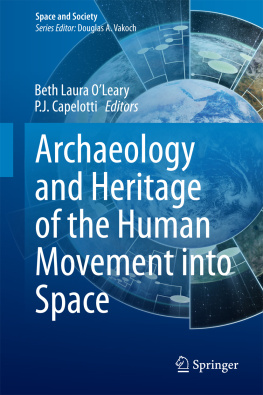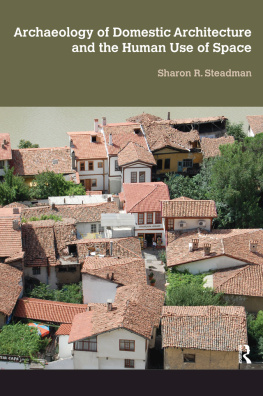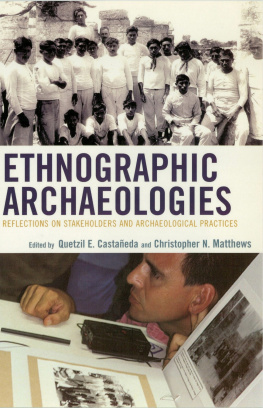1. To Boldly Go Where No Man [sic] Has Gone Before: Approaches in Space Archaeology and Heritage
Introduction
The classic stereotype of an archaeologist is an older man in a pith helmet digging up the remains of the Roman Empire. The modern version is a survey crew, including women, equipped with GPS walking over the surface of federal land in the western US and locating (precisely) prehistoric scatters of artifacts in compliance with preservation law.
Archaeology is, however, not tied solely to prehistoric times or just to the surface of the earth. Archaeology is a sub-discipline of Anthropology which embraces the totality of human experience, in that it should be focused on all times and in all places that humans exist. Specifically, Archaeology is the study of the relationships between material culture and human behavior. It can make substantive contributions to knowledge about human behavior that other disciplines such as history and sociology cannot. Archaeologists can study material culture at all times (i.e. the past and the present); there are no temporal limits, except perhaps the future. Present material culture is not off limits to archaeology. Archaeologists can also do investigations in all places. There are no spatial limits. Archaeology has been done on all the continents on Earth and within marine environments. It can also be done on material culture off earth, in orbit, in outer space, and on other celestial bodies like Mars and the Moon.
The foundation of archaeological inquiry into space flight and exploration began with archaeologists who were interested in ship and aircraft wrecks and who proposed they could contain significant data (Gould ) who while researching the technology of the Polynesians who were exploring and settling islands in the Pacific Ocean, suggested it might be worthwhile to think about the space sites (both terrestrial and non-terrestrial) created by both the United States and the Soviet Union.
In 1984, the U.S. National Park Service commissioned a Man in Space Historic Landmark Theme Study that inventoried sites in the United States that epitomized the space program in order to include them on the National Register of Historic Places, although none of the proposed sites were actually in space (Butowsky ). These terms never really stuck and the sub-discipline is currently identified as space archaeology and heritage.
The definition of space archaeology and heritage is the archaeological study of material culture found in outer space, that is, exoatmospheric material that is clearly the result of human behavior (Staski : 19). In its broadest sense, space archaeology includes all material culture in aerospace and aeronautical realms that relate to the development and support of all exoatmospheric activities. It encompasses human behavior on the Earth as an anchor to which all space materials are tied.
Space archaeology and heritage posits a cultural landscape of space as a vast connecting network of material remains that originate on earth and incorporate all human materials off Earth. One of its most distant examples is the Voyager 1 spacecraft which now has reached interstellar space. Launched in 1977, Voyager 1 is now more than 123 times as far from Earth as the planet is from the sun or approximately 18 billion km away (Lewis : 17). It is humankinds most distant artifact.
The Cultural Landscape of Space
The idea of a cultural landscape as appropriate for space archaeology and heritage starts with the earliest movement of our hominid ancestors out of Africa to colonize virtually all of the earth, and then in modern times (c. AD 1957) a move into space. Unlike terrestrial exploration in order to get humans into space and safely return home they need enormous amounts of technological support. However space is arbitrarily defined in altitude, usually 100 km from the earths surface, it is a distant and mostly inaccessible place.
Gorman (: 212). The famous photo taken from space by Apollo 8 astronaut James Lovell from their flight above the Moons surface in 1968 shows Earth as a curious, small, blue marble in a very large universe.
To put the exploration of space into a chronological historical context one can pick several starting places, beginning with objects launched skyward. In the United States in 1783, President John Quincy Adams with Benjamin Franklin watched some of the first launches of balloons, but they did not achieve space; even Chuck Yeagers 1947 flight which broke the speed of sound did not reach space.
The origins of the first uncontested movement of artifacts into space began at the end of World War II when US engaged in a competition to acquire German rockets and German rocket scientists. The V2 rocket became the basis of Cold War missile technology and its descendants launched the first satellites and later propelled humans towards the Moon. The Cold War was played out in space as well as on the surface of the Earth (Gorman and OLeary : 76).
The winner clearly was Sputnik, which was launched by the USSR into Earths orbit on October 4, 1957. Several months later Sputnik 2 ascended into space with a small unfortunate dog named Laika. When space became a technological battleground during this period of the Cold War, physicist Edward Teller reflected fears of many Americans when he said that the US had lost a battle more important than Pearl Harbor (Killian : 8).
While Sputniks circled the Earth, the US had a series of what were termed Flopniks until finally Explorer I went into orbit on January 31, 1958. This was followed by Explorer II and then Vanguard 1, which successfully launched in March 1958. Although the Sputniks and Explorers deorbited and vanished in fiery flashes, Vanguard 1 is still in orbit. It is predicted to be in orbit for another 240600 years. It is currently the oldest human artifact in space. As an artifact it is replete with conflicting and contested properties.
Vanguard
Vanguard is part of the historic context of the Cold War Space Race, an ideological weapon as well as an icon of the scientific exploration of space. As an important object or artifact, it even has its own websiteproof of its significance (Vanguard : 81). Since that time space has no longer been an empty frontier.
With the advent of the space exploration (c. 56 BP), an exoatmospheric archaeological record was created and is increasing exponentially. Figure shows Vanguard 1, the 1.5 kg, 15 cm aluminum sphere. Currently NASA tracks objects larger than 10 cm in orbit. It references thousands of satellites, spent rocket stage and breakup debris. Orbital debris has been defined as any human manufactured object in orbit that does not currently serve a purpose and is not anticipated to in the foreseeable future. Orbital debris can be thought of in some senses as what archaeologists term lithic debitage. Whereas there are pieces and parts of the core discarded (debitage) in the making of a projectile point or stone tool, orbital debris is what is left over or discarded since the original spacecraft mission.






